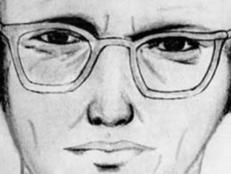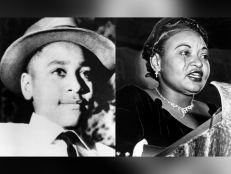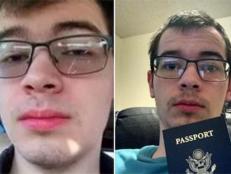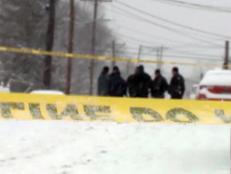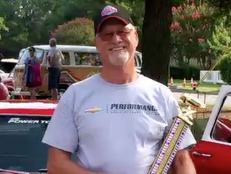Drinking the Kool-Aid: Jim Jones & the Peoples Temple Massacre in Pop Culture
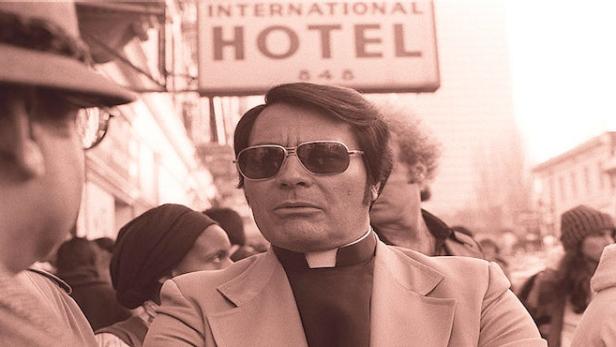
WikiMedia Commons
Reverend James Warren “Jim” Jones
November 18, 1978, is a date forever marked by one of humanity’s most bizarre, tragic, and darkly fascinating examples of religious fanaticism gone horrifically — and massively — berserk.
Thirty-eight years ago, in a Guyanese settlement called Jonestown, the Reverend Jim Jones and more than 900 of his Peoples Temple followers — men, women, children, and entire families alike — killed themselves and each other by consuming punch laced with cyanide and other poisons. More than a third of the victims were under the age of 18. Survivors were very, very few.
Powerfully self-educated and hyper-charismatic, Indiana native Jim Jones established the Peoples Temple in the 1950s. The church blended fiery Christianity with hard-left socialism and a fervent stance against racism in general, and American segregation in particular.
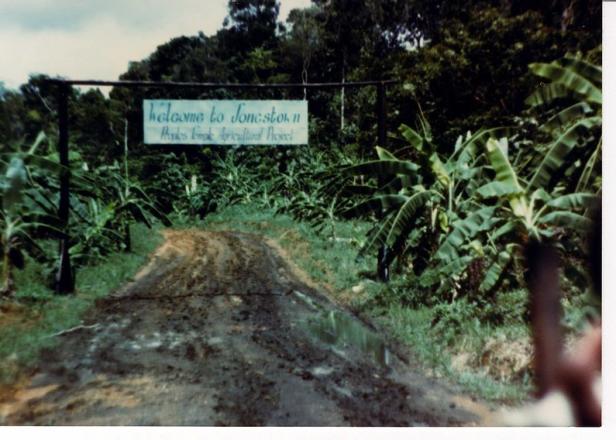
Wikimedia Commons
Jonestown entrance
In 1973, the Peoples Temple established a heavily populated “agricultural mission” in the South American nation of Guyana. That settlement would become Jonestown.
Meanwhile, back in the church’s San Francisco headquarters, Jones powwowed with major politicians, including Vice President Walter Mondale and California Governor Jerry Brown.
After abuse allegations arose in 1977, Jones and hundreds of Peoples Temple members hightailed it down to Jonestown. Shortly thereafter, the Reverend collapsed into ill physical health and paranoid madness regarding CIA conspiracies and imminent nuclear annihilation. At the same time, stories about torture, imprisonment, and even murder started leaking out from the compound.
Back in the States, relatives of Jonestown residents expressed grave fears, prompting Congressman Leo Ryan and U.S. Ambassador to Guyana Richard Dwyer, along with a party of 16 others, to visit the commune in November 1978.
Upon attempting to leave, the two government representatives, an NBC cameraman, and a Temple defector were shot to death on an airstrip. Nine others survived the shooting, but were abandoned by the pilot who took off in their escape plane. Ryan himself was shot more than 20 times.
Four days later, Jones addressed his followers in a final sermon calling for “revolutionary suicide.” Armed men lined up Jonestown residents around multiple tubs of grape drink made from a powdered mix that contained lethal doses of cyanide, valium, chloral hydrate, and Phenergran.
More than 900 drank the poison. Others got shot. Jones died from a gunshot wound, believed to be self-inflicted.
Prior to the World Trade Center attacks of September 11, 2001, the Jonestown Massacre stood as the largest killing of American civilians in a single, intentional act. Survivors describe the slaughter as a “homicide” rather than a “suicide,” as those who consumed the poison did so under extreme duress.
The sheer magnitude of the Peoples Temple cult and the Jonestown crime in terms of total victims and apparent mass loss of sanity horrified the public worldwide. Interest in the case has never diminished, spawning scholarly studies, serious-minded artistic representations, and rank exploitation products alike. Here are some of the most prominent examples.
THE PHRASE: “DRINKING THE KOOL-AID”
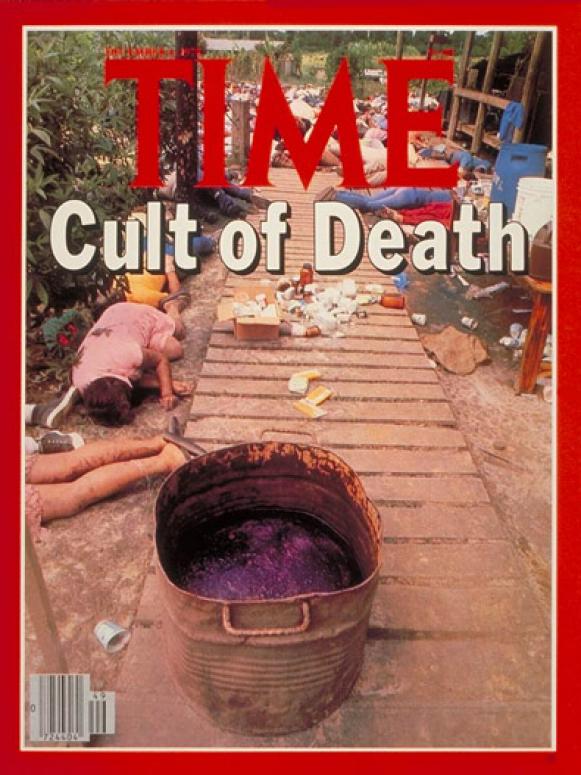
Time magazine cover dated December 4, 1978
You hear it all the time. In fact, you may even say it all the time. The popular idiom “drinking the Kool-Aid” denotes when a subject is buying wholeheartedly into an idea or a person who the speaker believes is fraudulent or harmful. It’s a way of saying somebody is voluntarily subjecting themselves to being brainwashed.
Specifically, the term refers to the poisoned grape drink fatally consumed by Jonestown residents — it was at first believed that they’d done so of their own free will. Not only is that notion questionable, but most reports indicate that the powdered drink mix was not, in fact, Kool-Aid, but its less expensive knockoff, Flavor-Aid.
TRUE-CRIME BOOKS
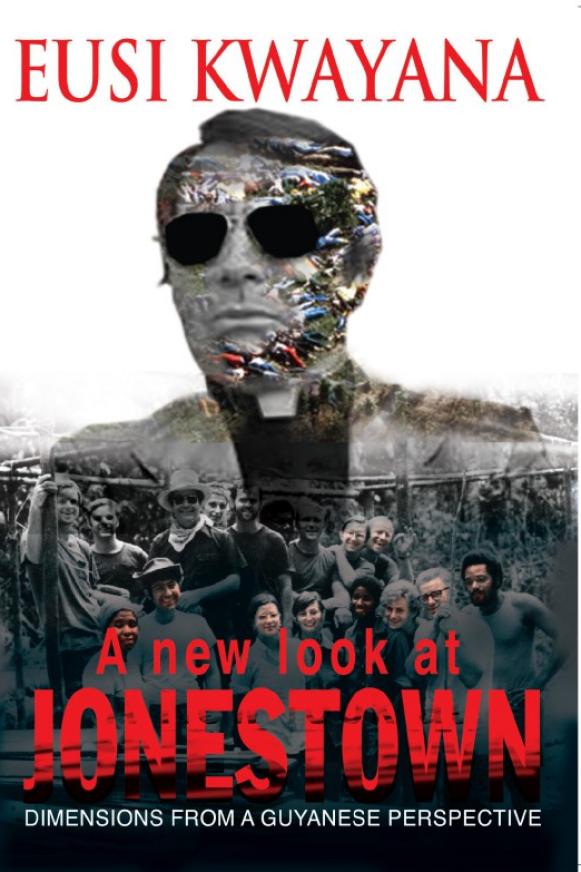
Literally dozens upon dozens of books have been dedicated to the Jonestown Massacre, ranging from quickie cash-in paperbacks rushed out in December 1978 to the scholarly A New Look at Jonestown: Dimensions from a Guyanese Perspective by Eusi Kwayana published in 2016.
Among the most acclaimed Peoples Temple–related tomes are Guyana Massacre: The Eyewitness Account by Charles A. Krause; Seductive Poison: A Jonestown Survivor’s Story of Life and Death in the People’s Temple by Deborah Layton (1999); Raven: The Untold Story of Jim Jones and His People by Tim Reiterman (2008); and A Thousand Lives: The Untold Story of Jonestown (2012) by Julia Scheeres.
GUYANA: CULT OF THE DAMNED (1979)
A deliriously sleazy Mexican exploitation flick, Guyana: Cult of the Damned aka Guyana: Crime of the Century spews out a sensationalized account of the “Reverend James Johnson”in his jungle commune complete with copious nudity, gory violence, and long lines around the grape drink at the end. Guyana played drive-ins and grindhouse theaters for years, finding a big second wind of success when paired a few years later on a double bill with a similar true life atrocity–inspired shock-fest, Amin: The Rise and Fall (1981).
GUYANA TRAGEDY: THE STORY OF JIM JONES (1980)
Powers Boothe won an Outstanding Lead Actor Emmy Award for his entirely gripping, alternately sympathetic and terrifying portrayal in the title role of the CBS mini-series, Guyana Tragedy: The Story of Jim Jones.
It remains a powerful production, with an all-star cast orbiting around Jones that includes Ned Beatty as Congressman Leo Ryan and James Earl Jones as Father Divine, an earlier charismatic spiritual leader who claimed to be God himself and inspired the future Peoples Temple creator.
HEAVY METAL SONGS
Trafficking as it does in pitch-black lyrical subjects, especially in regard to madness, murder, suicide, mass slaughter, and the occult, heavy metal music has drawn considerable dark-hearted inspiration from the Jonestown Massacre.
Among the head-banging anthems metal musicians have based on the Peoples Temple tragedy are “Guyana: Cult of the Damned” by Manowar (1984), “Carnage in the Temple of the Damned” by Deicide (1990), “Jonestown Massacre (Jim Jones)” by Church of Misery (2009), “Last Call in Jonestown” by Polkadot Cadaver (2013).
THE BRIAN JONESTOWN MASSACRE
The moniker of the popular San Francisco psychedelic art rock band the Brian Jonestown Massacre is a portmanteau term combining Brian Jones, the founding member of the Rolling Stones who drowned in 1969, with the mammoth loss of life at the Peoples Temple compound in Guyana.
After forming in 1990, the group musically acknowledged one half of their nomenclature six years later via a song called “The Ballad of Jim Jones.”
HE’S ABLE BY THE PEOPLES TEMPLE CHOIR (1999)
Music always factored hugely into the preaching and religious ceremonies of the Reverend Jim Jones, with the Peoples Temple Choir becoming one of the church’s best-loved components.
In 1973, the Choir released an upbeat gospel album titled He’s Able. Following the 1978 massacre, the original LP became a ghoulishly sought-after collector’s item.
Grey Matter Records reissued He’s Able on CD in 1999, adding a long final track titled “Mass Suicide” that combines a Jim Jones sermon with actual audio of the massacre as it takes place. At present, the CD costs a fortune.
JONESTOWN: THE LIFE AND DEATH OF THE PEOPLES TEMPLE (2006)
After winning an Outstanding Achievement in Documentary award at the 2006 Tribeca Film Festival, PBS broadcast Jonestown: Life and Death in the Peoples Temple as part of its American Experience series. It’s a moving, hair-raising, and heartbreaking chronicle of what led up to the massacre, how it happened, and what became of survivors, loved ones, and other associates in the tragedy’s aftermath.
“GO OUTSIDE” BY CULTS (2011)
Critically embraced indie pop band Cults courted uncharacteristic controversy in 2011 with a music video for their song “Go Outside” that digitally places the group members into documentary footage of the Peoples Temple in Jonestown.
The very distinct type of music fans attracted to Cults expressed much online brain-wringing as to whether or not they should be offended. In turn, the video’s director claimed that Jonestown survivors “expressed their appreciation of our focus on the lives of the Peoples Temple members as opposed to exploiting the graphic images of the final tragedy.” Right.
THE SACRAMENT (2013)
The Sacrament is a found-footage horror film from director Ti West (House of the Devil) and producer Eli Roth (Hostel). Borrowing from the 1970s and ’80s Italian cannibal exploitation film genre in which urban outsiders venture into a jungle compound where doom awaits, The Sacrament substitutes flesh-eating natives for religious fanatics clearly modeled on Jim Jones and the Peoples Temple.
Real-life indie filmmakers AJ Bowen and Joe Swanberg star in The Sacrament as Vice reporters who helicopter into Eden Parish, an American religious commune in an overseas wilderness run by the Father (Gene Jones). Kool-Aid happens.
The Veil, a 2016 fright flick starring Jessica Alba, similarly centers on a documentary being made about a Jonestown-like suicide cult.
DANGEROUS PERSUASIONS: ESCAPING JONESTOWN (2015)
“Escaping Jonestown,” an especially mesmerizing episode of the Investigation Discovery series Dangerous Persuasions, re-creates the plight and flight of teenage Peoples Temple members Vernon Gosney (John Fray) and Leslie Wagner Wilson (Samantha Cole) as they attempt to flee the final solution of Reverend Jim Jones (Robert Nolan). Even if you know the outcome, the show is an exercise in suspense, bolstered by larger considerations of the struggles of those who survived Jonestown — and those who didn’t.
AMERICAN HORROR STORY: CULT (2017)
The seventh season of FX’s American Horror Story features various killers and cult leaders invoked by actor Evan Peters who memorably plays David Koresh, Charles Manson, Marshall Applewhite, and Jim Jones. In episode 9, Peters, as fictitious cult leader Kai Anderson, tests the loyalty of his subjects by challenging them to drink poisoned Kool-Aid.
PEOPLE MAGAZINE INVESTIGATES: CULTS (2018)
The second episode of the cult-centric series presented in partnership by People Magazine and Investigation Discovery is all about Jonestown. The compelling show with incisive research by People journalists shines a new light on how the utopia quickly turned into a hell as Jones spiraled deeper into his own paranoia.
Watch the “Jonestown Massacre” episode of Investigation Discovery’s People Magazine Investigates: Cults on ID GO now!
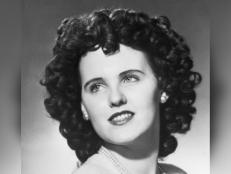
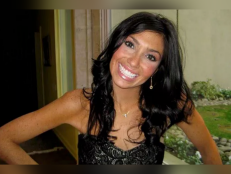
![Stacy Arthur [left] and James "Jim" Arthur [right] pictured smiling.](http://investigationdiscovery.sndimg.com/content/dam/images/investigationdiscovery/crimefeed/legacy/2023/01/the-playboy-murders-S1-E1-all-that-glitters.png.rend.hgtvcom.231.174.suffix/1673991794237.png)
